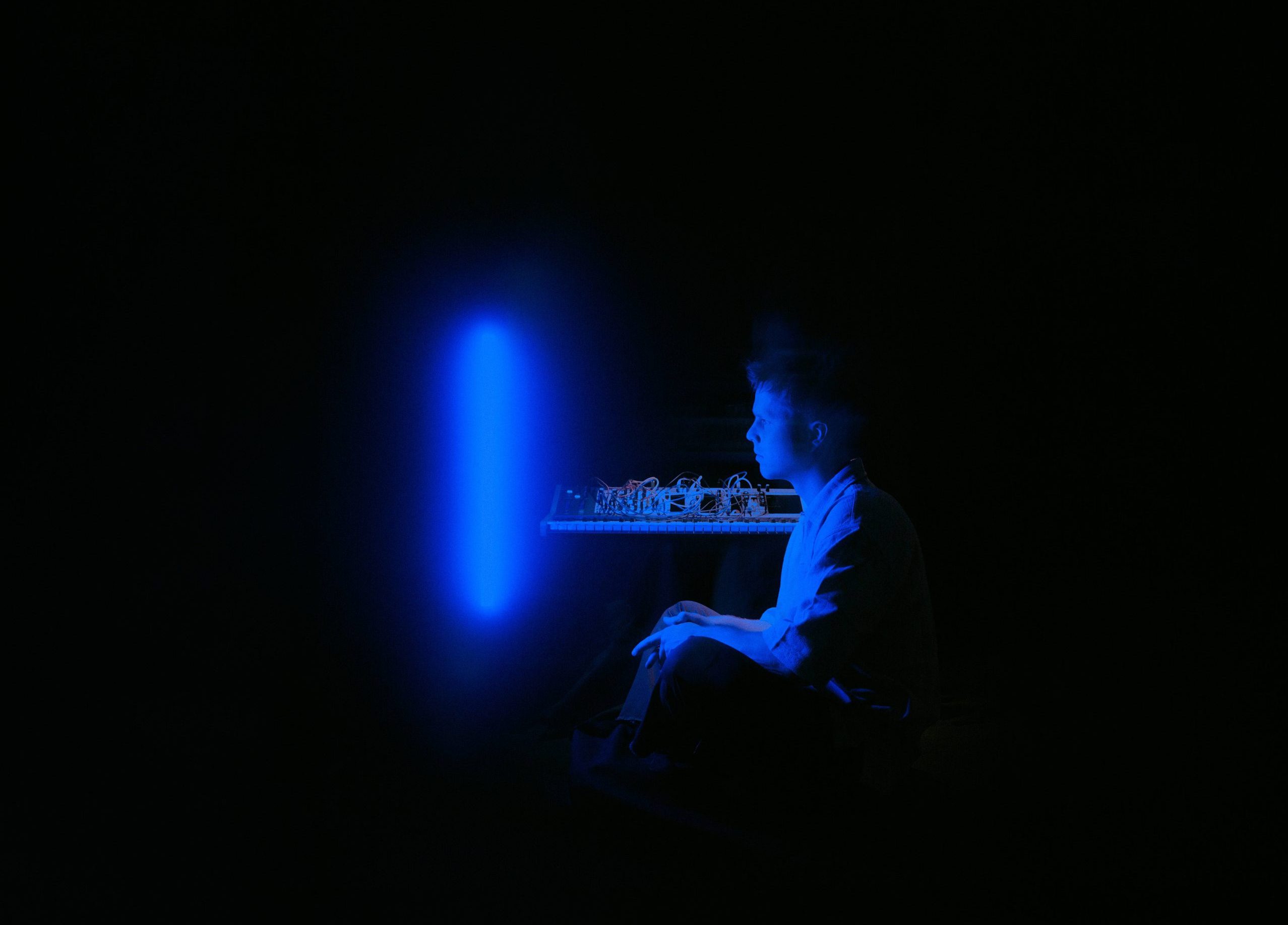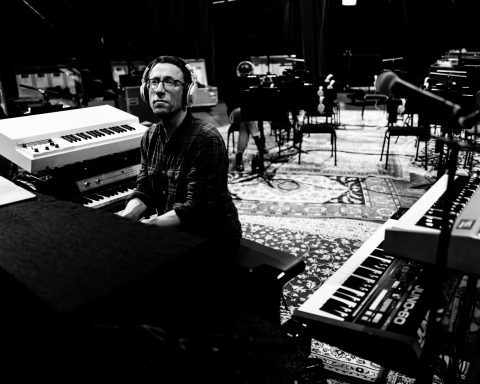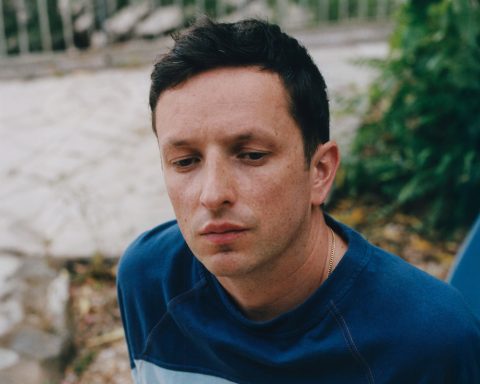Multi-instrumentalist and producer Daktyl weaves unexpected samples with live keys, guitar, and vocals. The result? Electronic gold. The UK-born artist draws inspiration from his British dubstep roots, the eclectic beat scene of his adopted L.A. home, and consistent travels, providing a diverse foundation for his extensive musical range. But he’s not just about the solo act. “Nothing better to do than making music with friends,” he muses about his collaboration with spoken-word poet Benni Ola. Hot on the heels of the Chaos Theory, Pt. 2 EP, Daktyl gives a glimpse into his studio setup, sampling process, and working relationship turned friendship.
UK to L.A. Beat Scenes
What inspired you to start creating electronic music?
I was at college in the UK right around the time dubstep was big there, and I was going to a lot of drum and bass (DnB) nights as well. But a lot was inspired by my big brother. He used to run drum and bass nights in Leeds, so he got me into liquid DnB and that sort of music.
I remember he had this really nice pair of headphones, and he played me Calibre’s “Steptoe.” I love that song, and to this day, I still use it to calibrate my speakers in a new studio because it’s just such a clean mix.
Sample Palette
Guitar, piano, keyboard, drums—does being a multi-instrumentalist help with creating your own samples?
Yeah, I don’t use sample libraries or anything like that for my music. Over the years, I’ve curated big packs of my sounds. I’ve released the occasional sample pack, but I have terabytes of stuff to pull from.
What does your process for sampling look like?
I have dedicated days of sample curation, creation, and sound design. Often, I will reconfigure my studio and put things that aren’t supposed to be in parallel alongside one another, such as random guitar pedals on drum machines like the TR-8S.
I spend a couple of hours once a week just jamming. And the way I’ve set up my studio, everything is playable and loopable at once. I have this huge collection of loops and jams that I’ve created. And that’s really useful because when I start actually making music, I can draw from that collection for sampling and song creation inspiration.

You moved to L.A. from London. What’s different about the electronic music scenes in the two cities?
After coming to L.A., I was and continue to be very inspired by the L.A. beat scene. I went to Low End Theory a lot, which was an amazing night with a lot of alternative electronic/hip-hop acts playing—like Flying Lotus, Stateless—all these interesting people.
There’s a more American sound of electronic music too—a lot more poppy stuff. I’m also interested in pop and songwriting. So, for me, it’s probably the best music city in the world. I love it. There are so many different genres, and so many amazing people to work with. And I love going back to London and working there.
"I spend a couple of hours once a week just jamming. And the way I've set up my studio, everything is playable and loopable at once."
Do you sample any non-instrumental sounds to add to your music?
Yes, all the time. I like to travel a lot, and whenever I travel, I take a lot of field recordings—conversations I have, the radio playing, a wave crashing, or wind static. If anything sounds different and interesting to me, I’ll pull my phone out and get a voice memo of it. I have a huge folder of sounds like that.

Gearhead Goals
You have an impressive home studio setup. How did your collection begin?
I’ve always been a bit of a gearhead, but I didn’t always have the means to get all the gear I wanted. It’s been a slow accumulation over the years. This year is the first time I thought, “Okay, this is everything I’ve ever dreamed of having. I don’t think I need anything else.” But it took about seven or eight years to get to that point.
I find it very inspiring when I get a new piece of gear. I’ll usually spend the first day with it just jamming. And often, a song comes from that. The freshness and naivete of what you’re messing around with can end up being quite interesting, and you can get quite interesting results.
"I've always been a bit of a gearhead, but I didn't always have the means to get all the gear I wanted. It's been a slow accumulation over the years."
We’ve spied some Roland gear in your studio, including a GAIA synth and TR-8S. Do you have a go-to instrument in your collection?
I own a TR-8S and a Roland A-88, both of which I love. The Roland A-88 is probably the best weighted keyboard I’ve ever played. It’s very expressive, and the velocity sensitivity on it is excellent. And the TR-8S is a fantastic drum machine. I’ve loaded it with a lot of my own samples, so it’s great for getting a quick groove.
When I was living in London, I borrowed my friend’s GAIA all the time. He’s not a musician, but he loves the artist Grimes. So, he bought the synth to try and make music like Grimes.

Chaos Rules
How does your approach to remixing a song differ from your original work?
It’s often based around the acapella, if there is one. If there isn’t, I’ll treat it like a sample pack. I draw from it and use whatever I find interesting. I try to treat a remix like a brand-new track while also paying homage to the original. It’s a fun thing to do with a different process.
Your EP Chaos Theory, Pt. 2 with Benni Ola just came out. How did you two start working together?
We were put in a random session together around 2018 and immediately clicked. I was like, “Who’s this guy? He’s so talented, so quick.” Lyrics have always been very important to my music. He comes from a poetry background, so his lyrics are just amazing.
He’s one of my best friends now. We just enjoy making music together, and we both like to experiment—which is important. We also prefer not to have rules when we’re creating. It’s a great partnership. We’ve worked on a lot of music over the years, so I’m excited for some of it to get released.
"Happy accidents can happen a lot more when there are other heads in the studio because other people hear things differently."
Does your songwriting process differ when collaborating versus when working on your own music?
Absolutely. Happy accidents can happen a lot more when there are other heads in the studio because other people hear things differently. Something you might resonate with, they might not, and vice versa. So, inevitably, the process changes. But you always learn something. Every session I go to, I try to learn something new. Even with Benni, after all these years, I still learn something new whenever I work with him.
Do you have any advice for acoustic instrumentalists interested in jumping into electronic music?
Get Ableton. If you come from an instrumental performance background, I think it’s the most intuitive. I do a lot of loop-based stuff, and it’s set up for that. The built-in looper is fantastic. In the sequencer view with the columns, the ability to trigger clips of varying bar lengths is useful, too. You could record your guitar and then sequence it however you want.
"Don't be afraid to improvise. Improvisation is really inspiring to me. And if you're playing instruments, don't get too on the grid or locked into a production headspace."
Also, don’t be afraid to improvise. Improvisation is really inspiring to me. And if you’re playing instruments, don’t get too on the grid or locked into a production headspace. I try and keep things loose in parts, but obviously, as soon as you go into the digital realm, it’s easy to get stuck on the grid and that quantized field. But do whatever you want!







